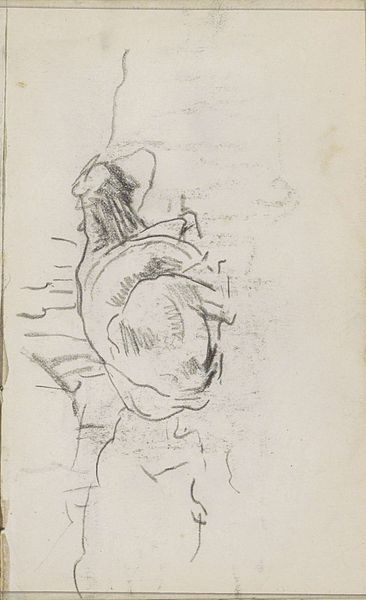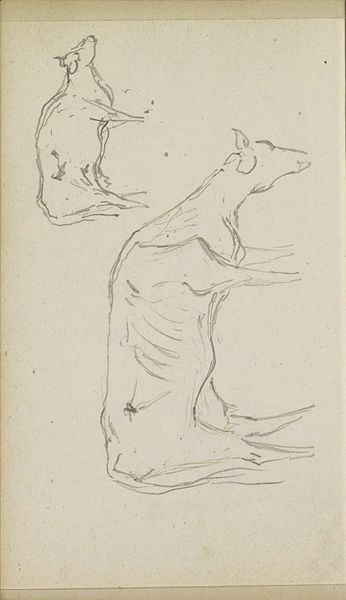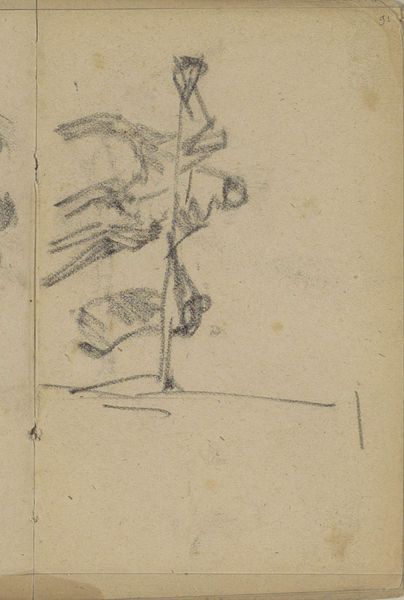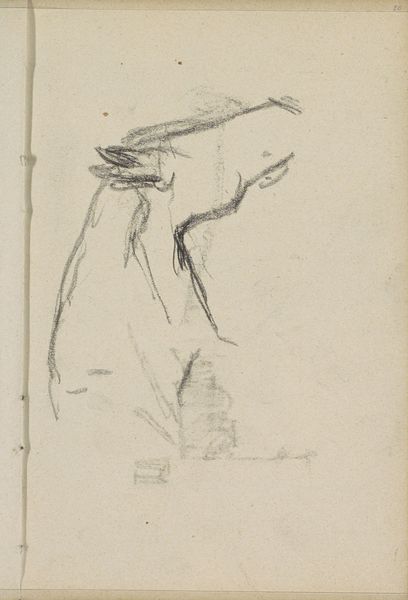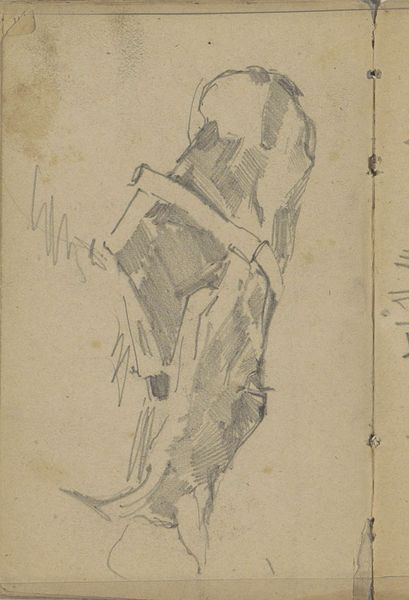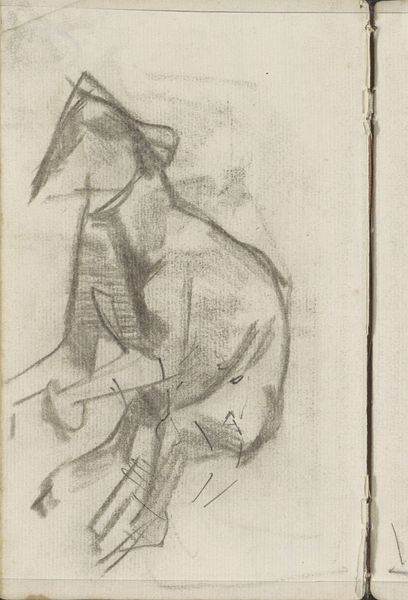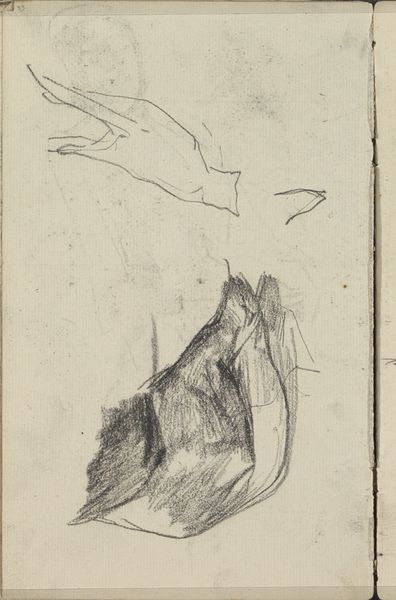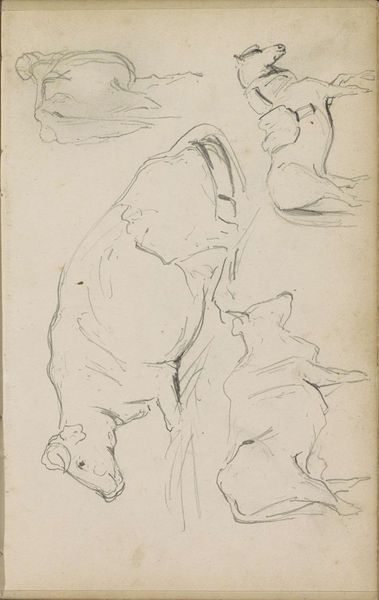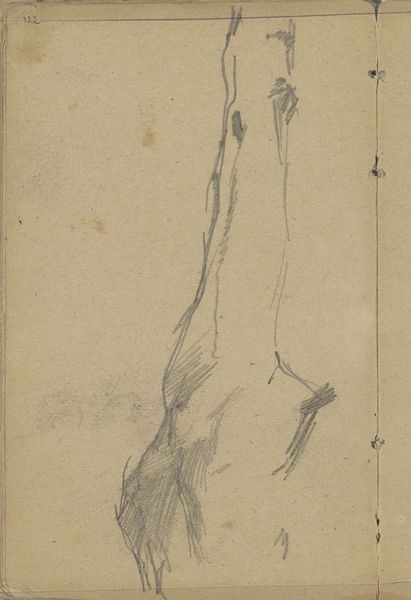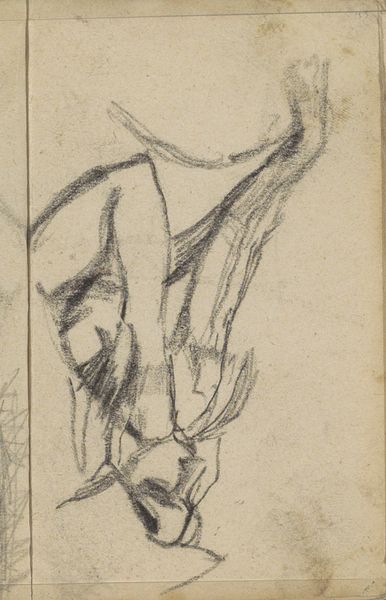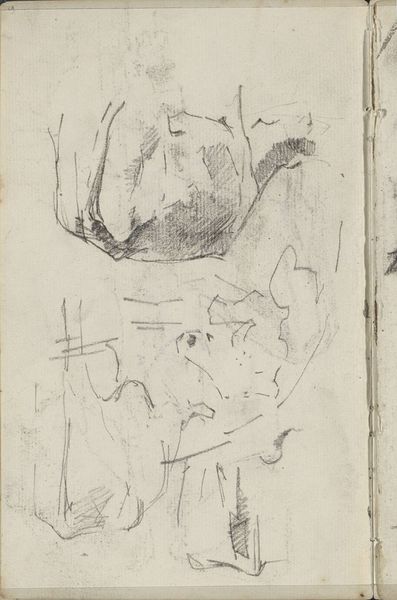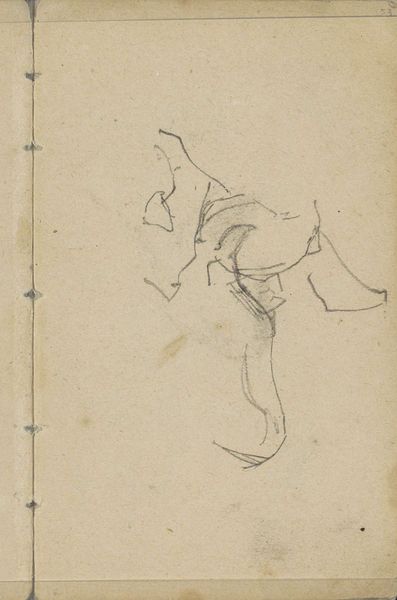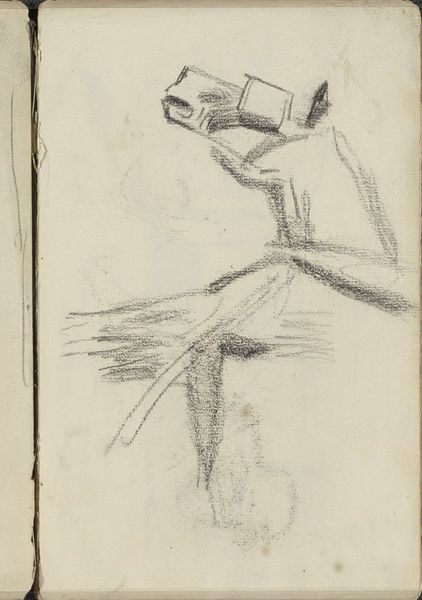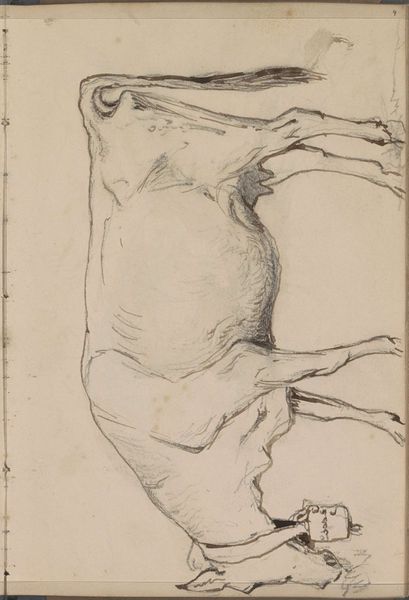
drawing, paper, pencil
#
drawing
#
pencil sketch
#
landscape
#
figuration
#
paper
#
pencil
Copyright: Rijks Museum: Open Domain
Editor: This is “Twee koeien,” or “Two Cows,” a pencil drawing on paper by Johan Hendrik Weissenbruch, dating from the late 19th century. I find it quite simple, even minimal, and I am curious how you would approach such a humble work. What catches your eye? Curator: Thanks, that's a great starting point. It's fascinating how a seemingly simple sketch like this can open up broader conversations about representation and the politics of looking. Given the period, and the Netherlands' colonial history, how do we interpret depictions of pastoral life? Does it perpetuate a romanticized, perhaps even misleading, vision of rural existence, one that elides the economic realities of agricultural labor? Editor: That's a perspective I hadn't considered. I was focused on the seeming innocence of the subject. So, you’re saying we can't separate this image from its historical context and potential implications, even if it seems harmless? Curator: Precisely. Whose lives and stories are being left out? Who has access to pastoral landscapes and what power dynamics are in play? We need to unpack the presumed "naturalness" of the scene. It reminds me of landscape paintings that served imperial narratives by representing the colonized world as idyllic for exploitation. It may be a bit of a stretch in this particular case, but such questions should be always considered. Editor: I see your point. Now, when I look at the drawing, I wonder what the artist's intentions really were. Maybe there wasn’t a political agenda and it's "just" cows. Curator: Indeed, separating intent from effect can be complex and doesn't need to fall under "political intentions" at all. Ultimately, what matters is that we bring a critical lens to everything we see, and encourage a discourse to bring us closer to historical accuracy and cultural sensitivity. Editor: This has really made me think about the layers of meaning that can be found even in the simplest-seeming art. Thanks for your perspective. Curator: My pleasure. These dialogues are essential, aren’t they, to broaden our understanding and connect art to real-world issues?
Comments
No comments
Be the first to comment and join the conversation on the ultimate creative platform.
